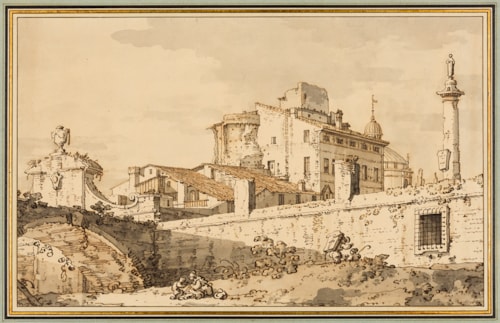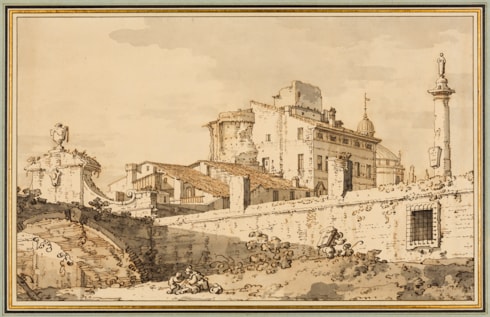
Giovanni Antonio Canal, CANALETTO
Venice 1697 - Venice 1768
Biography
A pupil of his father Bernardo, a theatrical designer, Canaletto began his career as a scenographic painter before turning his hand to view painting following a year spent in Rome between 1719 and 1720. He is first noted in the records of the guild of Venetian painters in 1720, and his earliest independent works date from later in that decade. Canaletto’s resplendent paintings of Venetian views soon found a ready market among visitors to Venice, in particular English noblemen on the Grand Tour. Early in his career he met Joseph Smith, an Englishman resident in Venice, who established a profitable business relationship with the young painter. The British Consul in Venice between 1744 and 1760, Smith arranged the sale of Canaletto’s paintings to many of his countrymen, and most of the artist’s work eventually passed through his hands. His success in promoting the painter meant that Canaletto soon enjoyed an unrivalled reputation as a vedutista, or view painter. Encouraged by Smith, Canaletto paid two long visits to England, once in the late 1740s and again in the early 1750s, remaining in the country for a total of nine years. Elected to the recently established Accademia Veneziana in 1763, he died in April 1768, two years before his patron Smith.
A talented and prolific draughtsman, Canaletto produced both rapidly drawn compositional sketches (which he called scaraboti), and elaborate, highly finished drawings, many of which were conceived and sold as independent works of art. Many of Canaletto’s finished drawings were acquired by Consul Smith for his own collection, while others were purchased by such English collectors as the Earl of Warwick and Sir Richard Payne Knight. Smith’s remarkable collection of drawings, purchased from him by King George III in 1762 and now in the Royal Library at Windsor Castle, is today the largest single surviving group of drawings by Canaletto.


